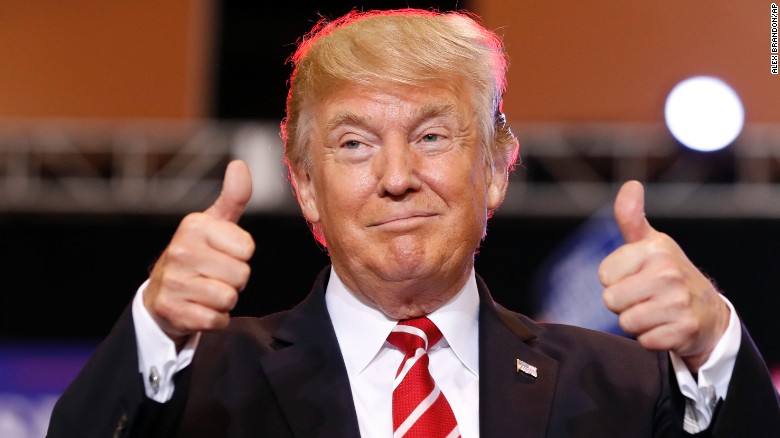
Meka Kema, With Agency Reports
The United States Attorney General, William Barr, has said that there was no collusion between any American and the Russian government during the 2016 campaign, evening though Russia had tried to influence the election.
Barr said at a news conference on Thursday that “after nearly two years of investigation, thousands of subpoenas, hundreds of warrants and witness interviews, the special counsel confirmed that the Russian government sponsored efforts to illegally interfere with the 2016 president election, but it did not find that the Trump campaign or other Americans colluded in those efforts.”
The comments came less than two hours before the Justice Department was expected to publicly release a redacted version of special counsel Robert S. Mueller’s confidential report.
In addition to laying out the evidence on whether any Americans participated in the Russian election plot, the report reviews 10 episodes in which Trump acted in ways that might be considered efforts to interfere with Mueller’s investigation, Barr said.
Mueller did not reach a final “prosecutorial judgment” on whether any of those episodes amounted to illegal obstruction of justice, Barr said. He repeated his own conclusion that they did not, saying that Trump had “noncorrupt motives” for opposing the investigation.
Prosecution of a charge of obstruction of justice generally requires proof that the defendant acted out of a corrupt intent. In Trump’s case, “there is substantial evidence to show that the president was frustrated and angered by a sincere belief that the investigation was undermining his presidency,” Barr said.
“As he said from the beginning,” the attorney general added, “there was, in fact, no collusion.”
House Democrats have feared Barr is trying to put his own spin on the investigation before the report is public.
“The attorney general appears to be waging a media campaign on behalf of President Trump,” Rep. Jerrold Nadler (D-N.Y.), chairman of the House Judiciary Committee, said at a news conference Wednesday evening.
As Barr spoke Thursday, Nadler released a formal letter asking Mueller to testify.
“It is clear Congress and the American people must hear from special counsel Robert Mueller in person to better understand his findings,” Nadler wrote on Twitter.
Barr said he has “no objection” to Mueller testifying.
The nearly 400-page document — titled “Report on the Investigation Into Russian Interference in the 2016 Presidential Election” — is the culmination of 22 months of work by Mueller and his team.
Its long-awaited release, even in redacted form, could be one of the pivotal moments of Trump’s presidency and is likely to reverberate into the 2020 campaign.
The case has already spawned a series of legal and political threats that will continue to shadow Trump. Other federal investigations remain underway in several jurisdictions — most notably New York — and House Democrats have launched inquiries into Trump’s finances, business dealings, relationships with foreign banks and other concerns.
Republicans are pushing the Justice Department to investigate alleged abuses in the early stages of the Russia investigation. Trump’s legal team is also preparing to release its own counter-report on the Russia inquiry.
In the weeks since March 22, when Mueller filed the report, lawyers from the Justice Department and the special counsel’s office have trimmed details involving secret grand jury evidence, classified intelligence, ongoing investigations and “peripheral third parties.” Barr said the
Even in its censored form, the report will provide a much wider window into the investigation than the four-page letter Barr gave to Congress on March 24.
Barr’s letter said Mueller did not establish the existence of a criminal conspiracy between Trump’s campaign and the Russian government as Moscow attempted to sway the 2016 election.
Barr also wrote that Mueller did not reach a conclusion on whether the president had obstructed justice. However, Barr and Rosenstein decided the evidence was insufficient to demonstrate that Trump had committed a crime.
The Russia investigation started as a counterintelligence probe in mid-2016, and it eventually examined Moscow’s broader efforts to use social media, hack emails and influence American voters to depress support for Hillary Clinton, Trump’s Democratic opponent for president.
It also looked into whether any of Trump’s campaign aides directly coordinated with the Russian operation. The Foreign Intelligence Surveillance Court, which operates in secret, repeatedly authorized surveillance against a former campaign aide, starting before the election.
When Trump fired James B. Comey as FBI director in May 2017, Mueller was appointed as special counsel to lead the investigation and protect it from political influence.
The probe led to criminal charges against 34 people, including some of Trump’s closest associates.
His first national security advisor, Michael Flynn, admitted lying to federal agents about his conversations with the Russian ambassador during the presidential transition. Trump’s former campaign chairman, Paul Manafort, was sentenced to 7½ years in prison for tax evasion, bank fraud and conspiracy charges related to his work as a political consultant in Ukraine.
The president’s longtime lawyer Michael Cohen pleaded guilty to lying to Congress about negotiations for a Trump Tower in Moscow. He was also ensnared in a parallel investigation into election-year payments of hush money to two women who said they had slept with Trump.
The majority of people charged by Mueller were Russian nationals who are unlikely to ever see the inside of a U.S. court.
They include a dozen military intelligence officers who allegedly hacked Democratic Party computers and released tens of thousands of emails through WikiLeaks during key moments in the campaign.
Also indicted was Yevgeny Prigozhin, an oligarch who has close ties to Russian President Vladimir Putin and allegedly funds the Internet Research Agency in St. Petersburg. A dozen employees of the organization were accused of spreading divisive and false content on social media.